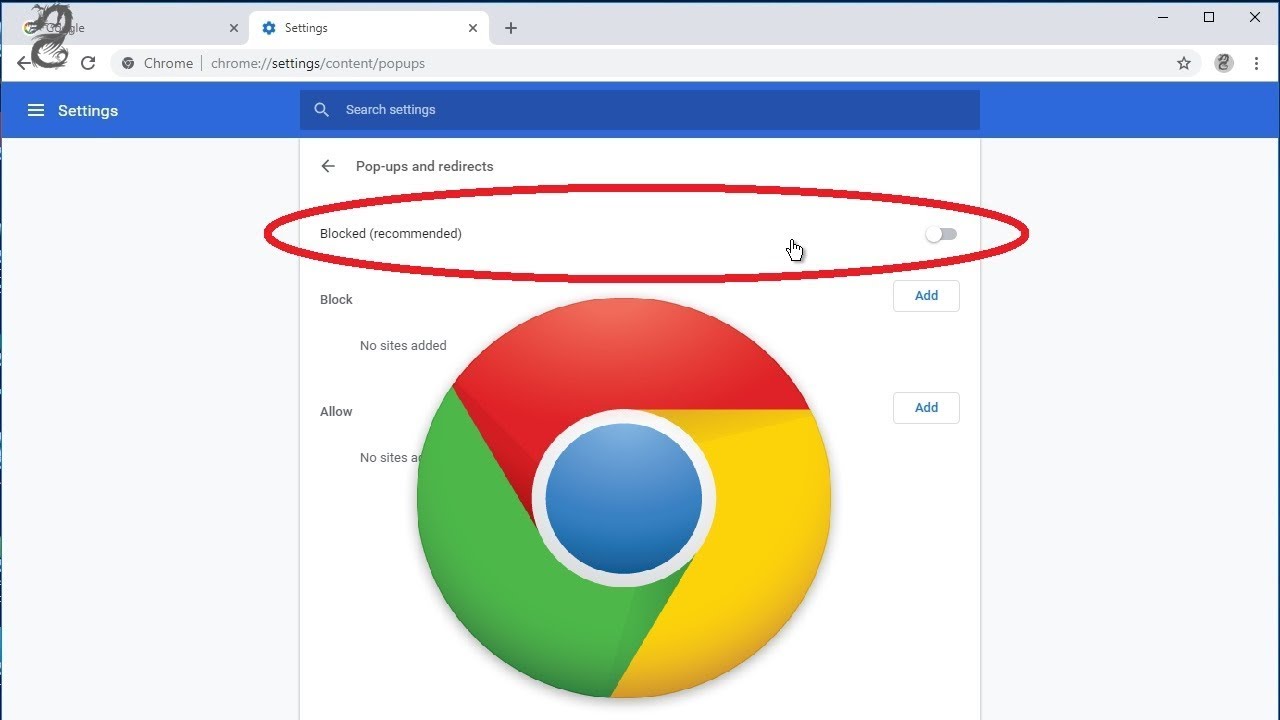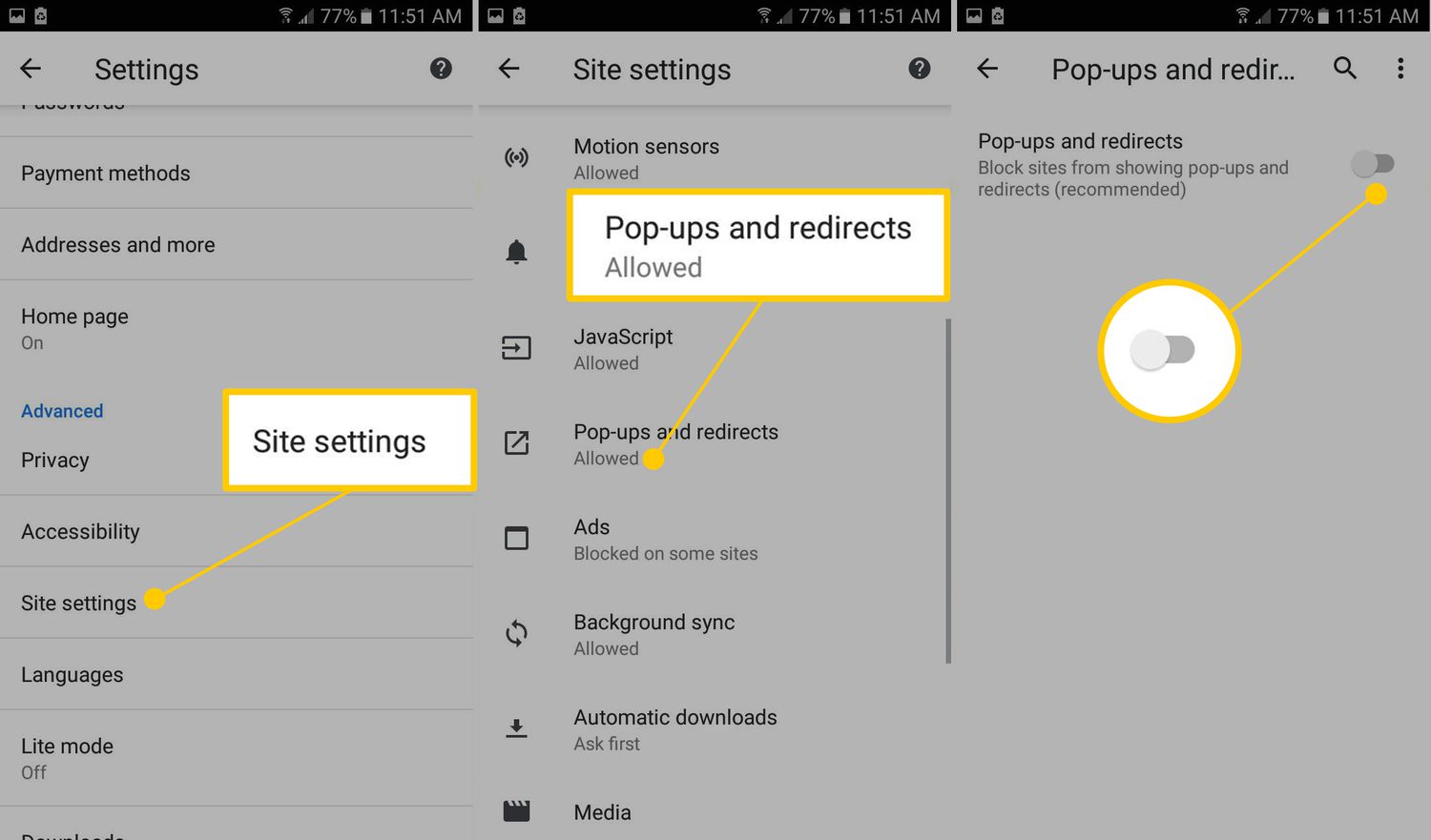Introduction
When browsing the web, encountering unexpected website redirects can be frustrating and disruptive. You might be in the middle of reading an article, watching a video, or simply navigating a site when suddenly you're whisked away to a completely different webpage. This not only interrupts your online experience but can also be a sign of potential security risks. Fortunately, there are several methods to address and prevent these unwanted redirects, particularly when using the popular Chrome browser.
In this article, we will explore effective strategies to stop websites from redirecting in Chrome. Whether you're experiencing these redirects on a desktop or mobile device, understanding the underlying causes and implementing the right solutions can help restore a seamless and secure browsing experience. From clearing browsing data to disabling JavaScript and checking for malware, we'll delve into practical steps that can mitigate or eliminate the nuisance of unexpected website redirects.
By following the guidance provided in this article, you can regain control over your browsing sessions and minimize the impact of intrusive website redirects. Whether you're a seasoned Chrome user or someone who's relatively new to the browser, these strategies are designed to empower you with the knowledge and tools to tackle this common online annoyance. So, let's dive in and explore the steps to safeguard your browsing experience and put an end to unwanted website redirects in Chrome.
Clear Browsing Data
Clearing browsing data is a fundamental step in addressing website redirects in Chrome. When you visit websites, your browser accumulates various types of data, including cookies, cached files, and browsing history. Over time, this data can become outdated or corrupted, potentially leading to erratic behavior such as unexpected redirects. By clearing this data, you can effectively reset your browsing environment and eliminate potential triggers for unwanted redirects.
To clear browsing data in Chrome, follow these steps:
-
Accessing Chrome Settings: Click on the three-dot menu icon in the top-right corner of the browser window, then select "Settings" from the dropdown menu.
-
Navigating to Privacy and Security: In the Settings menu, scroll down and click on "Privacy and security" in the left-hand navigation pane.
-
Selecting Clear Browsing Data: Under the "Privacy and security" section, click on "Clear browsing data."
-
Choosing Data Types: You will be presented with options to select the types of data you want to clear, such as browsing history, cookies, and cached images and files. You can also specify the time range for which you want to clear the data.
-
Initiating the Clearing Process: After selecting the desired data types and time range, click on the "Clear data" button to initiate the clearing process.
By following these steps, you can effectively clear accumulated browsing data in Chrome, potentially resolving issues related to website redirects. It's important to note that clearing browsing data will log you out of websites and may remove certain personalized settings, so be prepared to re-enter passwords and reconfigure preferences as needed.
In addition to addressing website redirects, regularly clearing browsing data can also contribute to improved browser performance and enhanced privacy. By maintaining a clean browsing environment, you can minimize the likelihood of encountering disruptive redirects and enjoy a smoother, more secure online experience.
In summary, clearing browsing data in Chrome is a proactive measure to mitigate the impact of unwanted website redirects. By periodically performing this maintenance task, you can optimize your browsing environment and reduce the potential for disruptive online experiences.
Disable JavaScript
Disabling JavaScript in the Chrome browser is another effective strategy to combat unwanted website redirects. JavaScript is a powerful scripting language commonly used to enhance website interactivity and functionality. However, in some cases, malicious or poorly coded scripts can trigger unauthorized redirects, leading to a disruptive browsing experience. By temporarily disabling JavaScript, you can assess whether the redirects are linked to script execution and take appropriate action.
To disable JavaScript in Chrome, follow these steps:
-
Accessing Chrome Settings: Click on the three-dot menu icon in the top-right corner of the browser window, then select "Settings" from the dropdown menu.
-
Navigating to Privacy and Security: In the Settings menu, scroll down and click on "Privacy and security" in the left-hand navigation pane.
-
Selecting Site Settings: Under the "Privacy and security" section, click on "Site settings."
-
Disabling JavaScript: Within the Site settings menu, locate and click on "JavaScript." Toggle the switch to turn off JavaScript, effectively disabling it for all websites.
By disabling JavaScript, you can temporarily prevent websites from executing potentially problematic scripts, including those responsible for unauthorized redirects. This allows you to assess whether the redirects cease when JavaScript is disabled, providing valuable insights into the underlying causes of the issue.
It's important to note that disabling JavaScript can impact the functionality and appearance of certain websites, as many rely on JavaScript for core features and interactivity. Therefore, this step is primarily intended for diagnostic purposes and should be used judiciously.
After evaluating the impact of JavaScript on website redirects, you can re-enable JavaScript by following the same steps and toggling the switch to the "on" position. If the redirects persist even with JavaScript disabled, it may indicate that the issue is not directly related to script execution, prompting further investigation using the other methods outlined in this article.
In summary, temporarily disabling JavaScript in Chrome provides a valuable troubleshooting approach to identify and address website redirects. By leveraging this diagnostic tool, you can gain insights into the role of JavaScript in redirect occurrences and take targeted measures to restore a seamless and secure browsing experience.
Check for Malware
In some cases, unexpected website redirects in Chrome may be indicative of malware or unwanted software on your device. Malicious programs, such as adware or browser hijackers, can manipulate browser settings and behavior, leading to intrusive redirects to unfamiliar or potentially harmful websites. Therefore, conducting a thorough check for malware is a crucial step in addressing and preventing unwanted redirects.
To check for malware in Chrome, consider the following steps:
-
Utilize Chrome's Built-in Security Features: Chrome offers built-in security features that can help detect and remove harmful software. Access the Chrome Settings, navigate to the "Privacy and security" section, and click on "Security." From there, you can initiate a scan for harmful software that may be affecting your browsing experience.
-
Install and Run Antivirus Software: Utilize reputable antivirus or anti-malware software to perform a comprehensive scan of your device. Many antivirus programs offer specific features designed to identify and eliminate browser-related threats, including those that cause unwanted redirects. Ensure that your antivirus software is up to date to effectively detect the latest threats.
-
Check Browser Extensions and Add-ons: Malicious browser extensions or add-ons can contribute to unwanted website redirects. Review the list of installed extensions in Chrome and remove any unfamiliar or suspicious ones. Additionally, consider using Chrome's built-in tool to check for harmful or unwanted software that may be affecting your browser's performance.
-
Monitor System Behavior: Pay attention to any unusual behavior on your device, such as unexpected pop-up windows, changes to your homepage, or unauthorized modifications to browser settings. These signs may indicate the presence of malware or unwanted software that requires immediate attention.
By diligently checking for malware and taking proactive measures to remove any identified threats, you can significantly reduce the likelihood of encountering unwanted website redirects in Chrome. Additionally, maintaining a secure and malware-free browsing environment contributes to overall online safety and protects your personal information from potential security risks.
In summary, conducting a thorough check for malware is an essential step in addressing and preventing unwanted website redirects in Chrome. By leveraging the security features of the browser and utilizing reputable antivirus software, you can safeguard your browsing experience and mitigate the impact of malicious software on your device.
Reset Chrome Settings
Resetting Chrome settings can serve as a comprehensive solution to address persistent issues related to unwanted website redirects. When other troubleshooting methods have not yielded the desired results, resetting Chrome settings can effectively restore the browser to its default state, eliminating potential configurations or settings that may be contributing to the redirects.
To reset Chrome settings, follow these steps:
-
Accessing Chrome Settings: Click on the three-dot menu icon in the top-right corner of the browser window, then select "Settings" from the dropdown menu.
-
Navigating to Advanced Settings: In the Settings menu, scroll down and click on "Advanced" to reveal additional options.
-
Selecting Reset and Cleanup: Under the "Reset and cleanup" section, click on "Restore settings to their original defaults."
-
Confirming the Reset: A confirmation dialog will appear, outlining the changes that will occur when resetting Chrome settings. Review the information and click on the "Reset settings" button to proceed.
By initiating the reset process, Chrome will revert to its original state, removing any customizations, extensions, and settings that may be contributing to the unwanted website redirects. It's important to note that resetting Chrome settings will not delete your bookmarks, history, or saved passwords, providing a balanced approach to resolving browsing issues while preserving essential data.
After resetting Chrome settings, it's advisable to monitor your browsing experience to assess whether the unwanted redirects have ceased. If the issue persists, it may indicate a more complex underlying cause that requires further investigation or assistance from technical support resources.
In summary, resetting Chrome settings represents a comprehensive approach to addressing persistent website redirects in the browser. By restoring Chrome to its default state, you can effectively eliminate potential configurations or settings that may be contributing to the issue, providing a fresh start for a seamless and secure browsing experience.

























